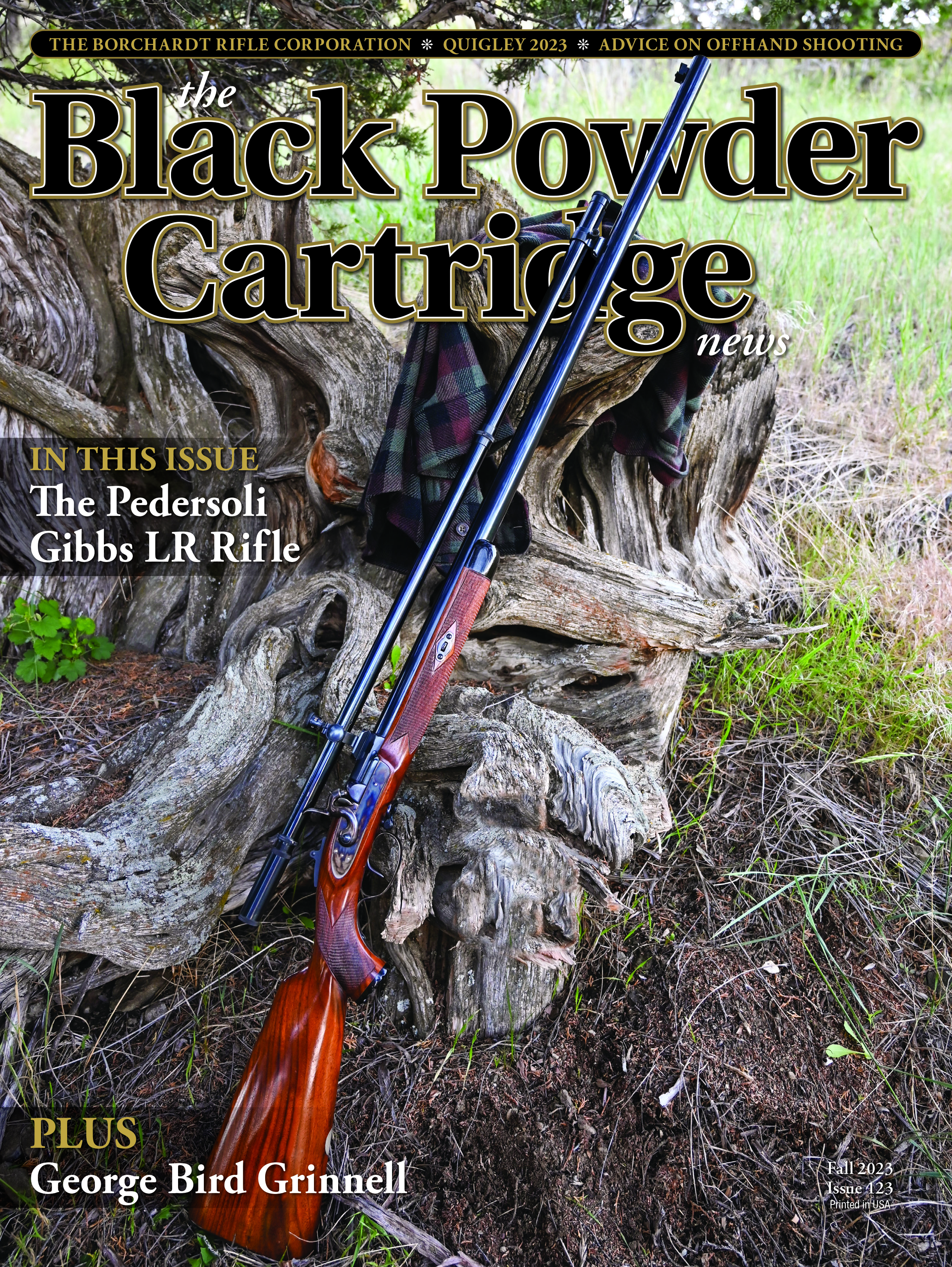The Wyoming Schuetzen Union’s “Center Shot”
American Gold Medal Marksmen – 1908
column By: Jim Foral | September, 23
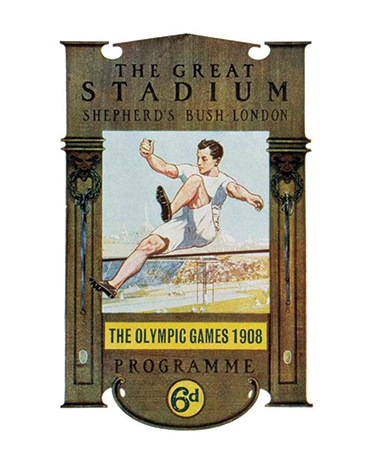
Paris hosted the next games in 1900, as a side attraction to its main event World’s Fair, which naturally got most of the focus. Consequently, the Paris Games came to be known as the Farcical (root word – farce) Games. If there was no harm done, time would tell.
The 1904 Games in St. Louis, Missouri, were hampered by the repeated chaos of the Paris Games. The 1904 Olympic Games, four months start to finish, was held at the same time as the Louisiana Purchase Exposition held in the same city. On the positive side, the Saint Louis games did expand the track and field events, and added swimming, diving, and boxing as steps in the right direction.
The sorry undertaking of the interim 1906 Intercalated Athens Games wasn’t considered an official Olympic event, but its 200 and 300-yard rifle matches with “army rifles,” along with some pistol competitions did have a redeeming effect. Neither the United States, or England, sent teams.
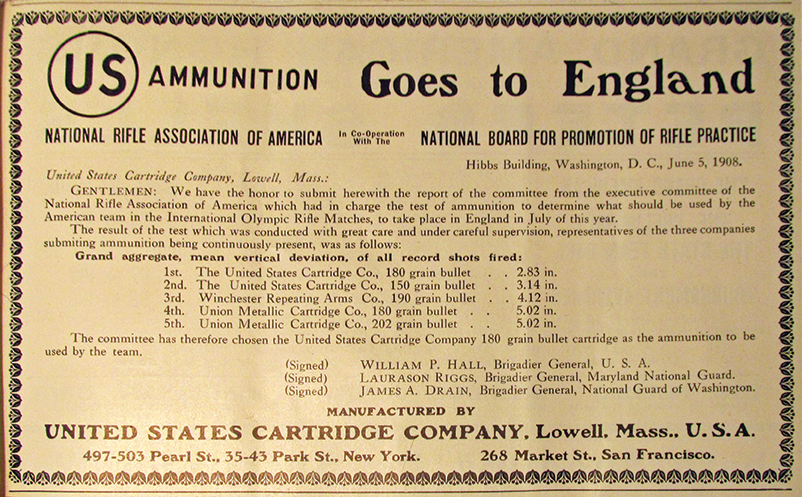
This was the sort of news that is bound to circulate within the domestic arms industry. When C.W. Dimick, the president of the United States Cartridge Company in Lowell, Massachusetts, became aware of General Drains dissent, he imagined somewhat of a different response to the British Olympic Association. The cartridge maker was the kind of man to consider the intangible, public-spirited benefits associated with putting American riflemen on far away firing points. In April of 1908, Mr. Dimick approached General Drain and proposed that “under proper conditions” he was willing to pay from his own pocket the expenses of the shooting teams that the NRA could put together.
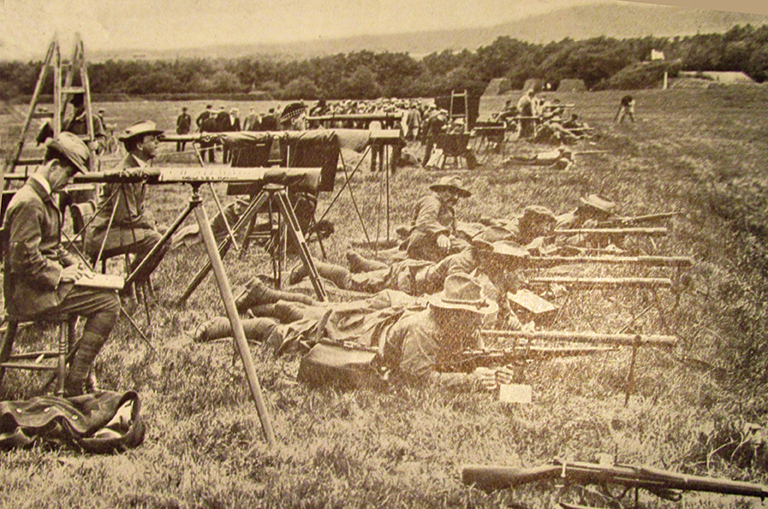
A snag cropped up straightaway. Dimick’s industry competition reacted to the NRA’s seemingly impulsive decision. The other ammunition companies, with names bigger than that of the United States Cartridge Company, wanted their fingers in the promotional pie, and did not want to allow the United States Cartridge Company to hog the benefits of its own good idea. There was an ulterior motive involved and it was not an unnatural first thought, and this seemed to be the underlying contention. Their suspicions were presented and Mr. Dimick wisely defused the situation with a workable resolution that seemed fair all around. Mr. Dimick went on record as welcoming the participation of any of his rivals in the ammo industry in funding the expenses of an American Olympic rifle team. Instantly, an official for the Winchester Repeating Arms company agreed to take responsibility for its share. This individual also recommended that the unwanted suggestion of team funding being industry-sponsored could be averted by having the NRA raise additional funds by public solicitation. The president of the Union Metallic Cartridge Company came on board with his agreement to cough up any funds that the NRA deemed to be his equitable share. By mid-1908, the Peter’s Cartridge Company cheerfully agreed to the same conditions.
Things progressed fairly quickly once fielding a team was decided upon. The only fair way to choose a commercial ammunition supplier, particularly under the circumstances, was by comparative testing. This was a thorough process with exacting NRA guidelines and objectives. The tests were conducted on the range of the District of Columbia National Guard range in mid-May. A representative of each supplier submitting samples was required to be present at the test firings, and each supplier submitted a specified quantity of their goods for trial by a panel appointed by the NRA’s Executive Committee. Accuracy testing, with rifles held in machine rests was done at ranges of 200, 600, and 1,000 yards, and the firing cadence approximated that of actual match conditions. Two strings were shot at each range. The first string of 10 shots simulated the pace of the rapid fire course. This was followed by a string of 17 shots with 40 seconds between shots, mimicking slow fire. Results were tabulated and assigned numbers representing the “Grand Aggregate Mean Vertical Deviation.” Tests were conducted on June 5, 1908.
The United States Cartridge Company submitted two candidate cartridges. One used a 180-grain cupronickel jacketed spitzer, and the other a 160-grain version of the same bullet. Winchester Repeating Arms Company sent their 30-1906 loads carrying a 190-grain match type bullet of their make. The Union Metallic Cartridge Company submitted two loadings for the panel’s consideration. The first featured a 180-grain bullet, and the other used their highly touted and successful 202-grain Hudson-Thomas bullet that had won the Palma Match in Ottawa the year before.
In the end, it was the United States Cartridge Company that would be able to advertise that their ammunition “Goes to England.” The aggregate deviation of their 180-grain load was 2.83 inches, compared to 4.12 inches for Winchester’s submission and 5.02 inches for each of the U.M.C. cartridges.
Meantime, Captain K.K.V. Casey, the man E. C. Crossman called “the best shot ever to face a target” was busy at the Springfield Armory range, selecting – by shooting – the most accurate of many star-gauged Springfield rifles to take to Bisley.
The whole preparedness process for the Olympic event happened at a very fast pace. Team trials took place at Camp Perry on June 10-12, 1908. On the strength of the results, the team members were Captain Kellogg Kennon Venable Casey, known to most as K.K.V. Casey. He was a Spanish-American War veteran with the 71st New York, and was at the time of the Olympic team trials a member of the Delaware National Guard. Casey had an impressive resume: Palma team member 1902, ’03 and ’07, New York State Team member 1901-1904. He won the Wimbledon Cup in 1902 and 1907, and the President’s Match in 1903.
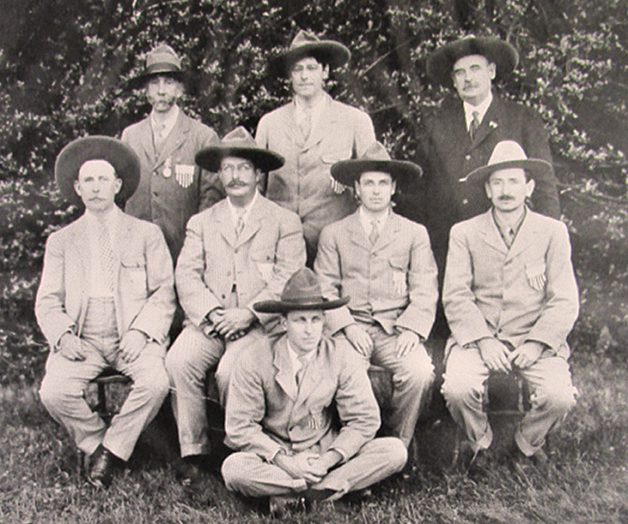
Sgt. William Leushner of the 7th New York was a veteran of the National Matches and a Palma team. He was among the medal winners in the 1907 President’s Match. Captain W. B. Martin of New Jersey won the Wimbledon Cup in 1901, and would go on to shoot on the 1912 Palma team as an Olympic veteran.
Captain C.S. Benedict of the 7th Ohio was a member of the Ohio state team from 1903-1907, a team member of the 1907 Palma meet, and won a silver medal in the national Individual Match in 1905. Corporal I. L. Eastman of the 2nd Ohio Infantry was on the Ohio State team 1903-1907, and had been a reserve at the 1907 Palma. Captain Eastman was not as credentialed as most of his team mates, but he was headed to Bisley. Sgt. Jeffers of Massachusetts and Captain J.C. Semon of Ohio went along as reserves.
General Drain, who appears to be the self-appointed team Captain, and his adjutant Frank Evans, together with the firing members of the team boarded the S.S. St. Louis, bound for England, on June 20, 1908. Mrs. Drain, Mrs. Martin, Mrs. Casey and Mrs. Leuschner embarked for London with their husbands.
At the same time, the eight-year old United States Revolver Association mustered up a revolver team and raised travel expenses to put a pistol team at the London Games. Its president Dr. Reginald Sayre, who won the National Revolver Championships (both indoor and outdoor) in 1908, was going along as team captain.
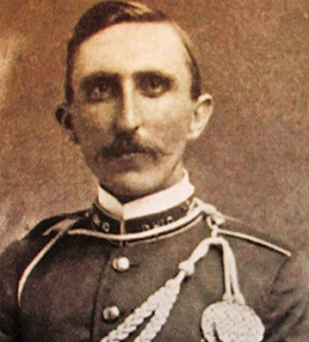
There was a Free Rifle set of matches. The three-position segment silver medal went to American H. Simon, who competed as an individual and not part of the notable military rifle team. On July 9, the Free Rifle Match, also called the 1,000-yard Individual Match event went to an old hand and a familiar name in the Individual Matches of the Creedmoor days of the 1870s. Joshua Millner, now 61 years old, was shooting a telescope-sighted Mannlicher rifle and was one of the few holdouts who still shot from the back position. He was still good enough to become the oldest gold medal winner in British Olympic history. Millner, the Irishman, was shooting for the British Isles, posted a staggering 98 X 100, beating the USA’s Kellogg Casey, who ran up a 93 X 100 and brought home the silver. Millner didn’t rely on his home court advantage, which is saying a lot when the opposition was K.K.V. Casey.
All three medals for Small Bore rifle (prone position), an American Metropolitan League staple, went to the British. The gold medal for team shooting also stayed in the country, but the teams of the Swedish and French took home the silver and the bronze.
The gold for the Olympic Clay Pigeon Shoot, a team event and one of the few shotgun competitions at the 1908 Games, was presented to the Canadian squad who beat handily the second place winning Englishmen. The trapshooting medals, for both singles and doubles, went to the British and Canadian teams, and curiously one standout Greek.
On the revolver front, the four-man team representing the United States beat a number of European teams in the 50-meter team match on July 10. I.R. Calkins and Charles Simpson Axtell returned home with their gold medals to Springfield, Massachusetts. Top-flight hand gunner John Dietz, returned with his gold to New York City. J.E. Gorman of San Francisco left London with his gold medal, together with the bronze he’d won in the Individual Pistol Matches.
The Union Metallic Cartridge Company provided all of the revolver ammunition used in the Olympic tournaments and practices by the U.S. team. Judging by their advertisement in the July 25, 1908 Forest and Stream, they were pretty proud of their contribution to the American gold medal effort.
The most important and earnestly followed of all the shooting events of the Games of 1908, was the team Military Rifle Match. It was universally conceded that this match decided the rifle championship of the world. From everywhere on the planet that a rifle was shouldered and fired, people awaited the results forthcoming from the Bisley range that July of 1908. This had been a six-distance position shooting team event. Starting from standing at 200 yards, the shooters advanced to a 500-yard stage, followed by 600, 800, and 900-yard stages. The most awaited and anticipated was the long range 1,000-yard segment.
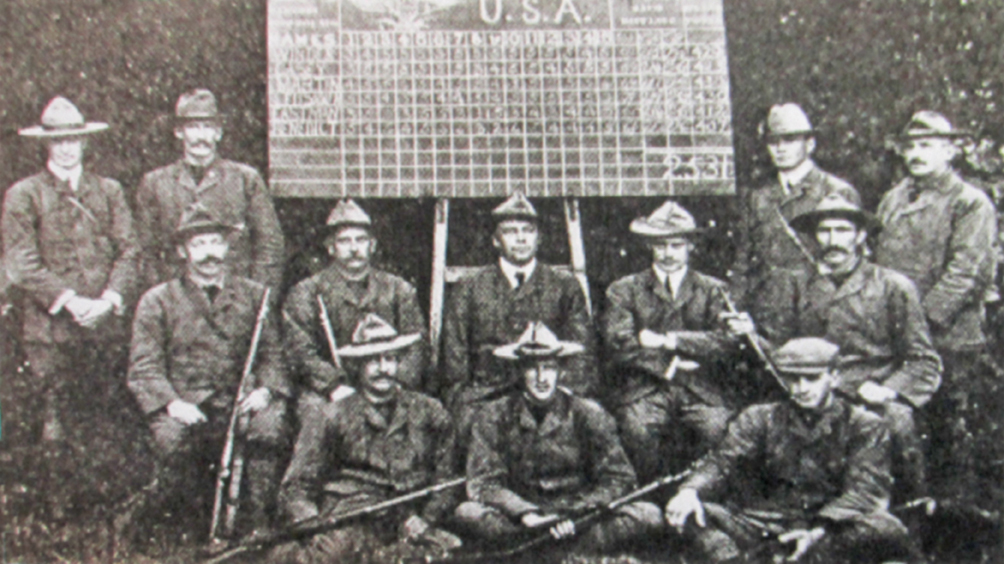
Leading the scoring of the six-man U.S. Team were Major Martin and Sgt. William Leushner, each with 430 points. C.B. Winder was a point behind with 429 X 500. Capt. Casey, who went on to win the Wimbledon and Leech Cups that same year, put up 423 points. Corporal Eastman had 412, and Capt. C.S. Bennet finished with 407.
After the conclusion of the main event, Lord Cheylesmore, the chairman of the Council of the National Rifle Association of Great Britain, in an impromptu congratulatory display, stalled General Drain long enough for a crowd to gather. This encounter developed into what amounted to a reception on the range.
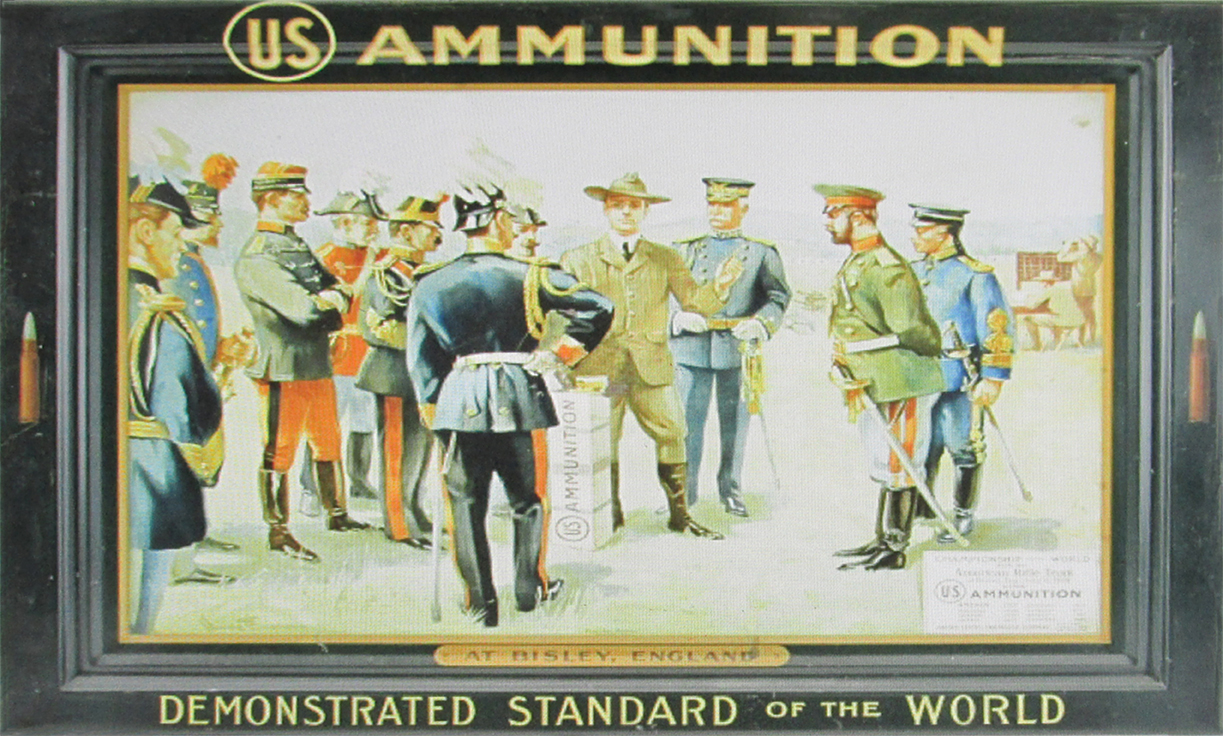
The scene was so striking that the imaginative United States Cartridge Company ad man captured its essence with a camera. The image was transferred to a painting placed on framed oversized sheets of tin to display and remind the consumer whose cartridges had won an Olympic gold medal.


